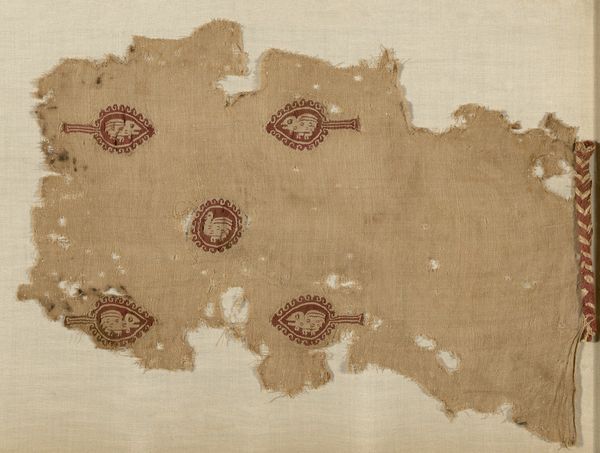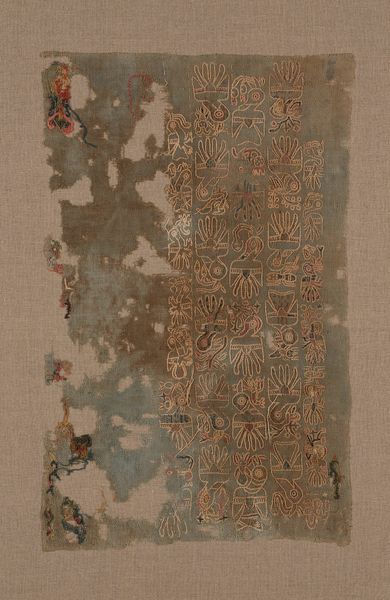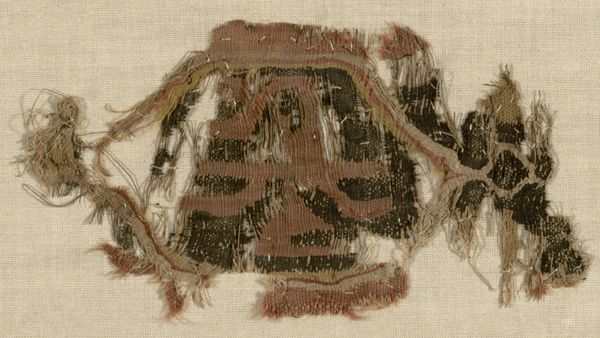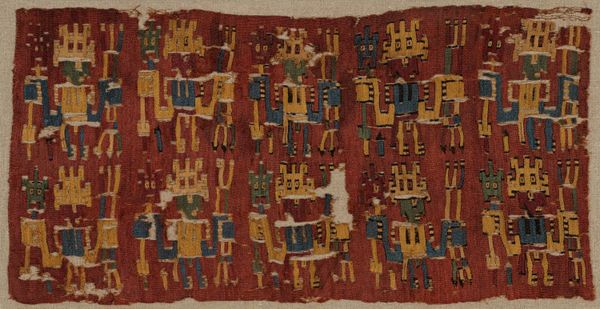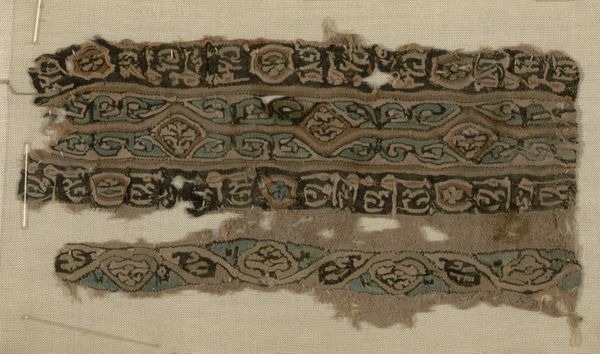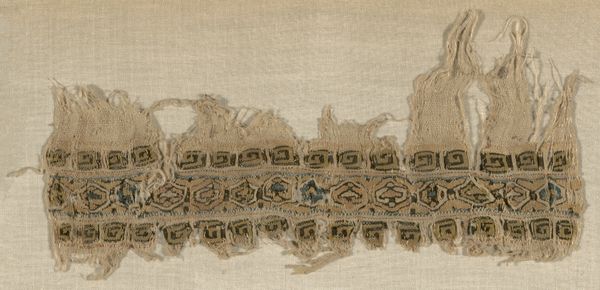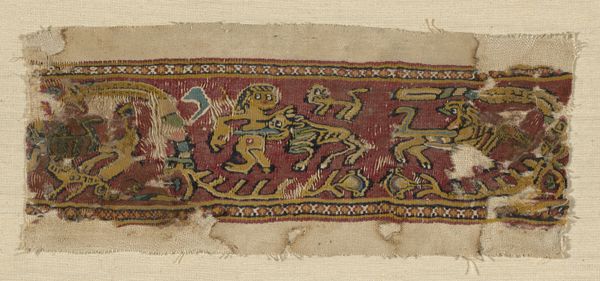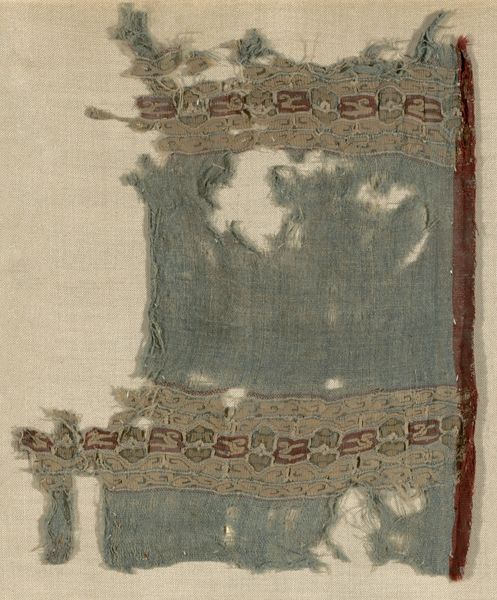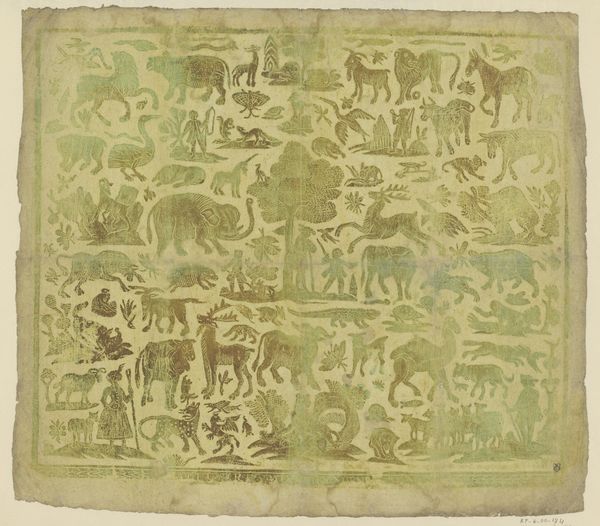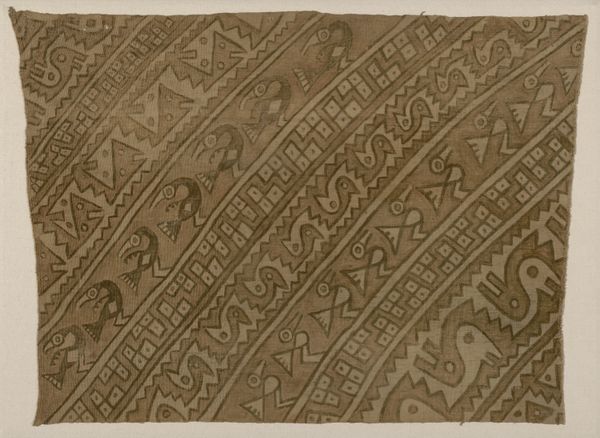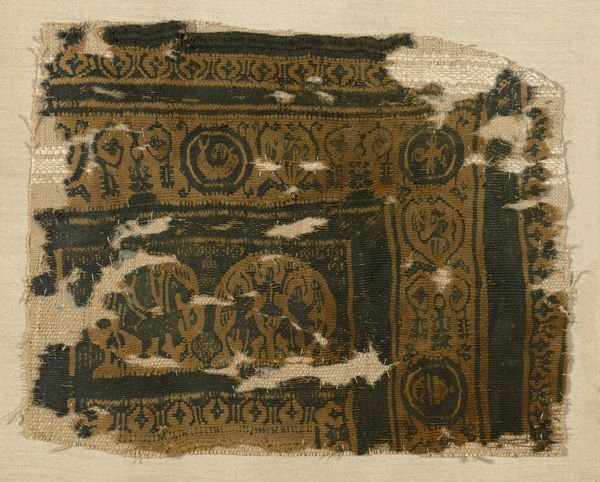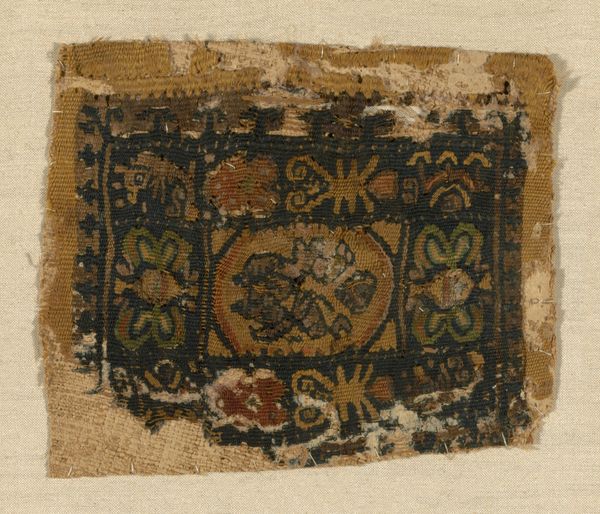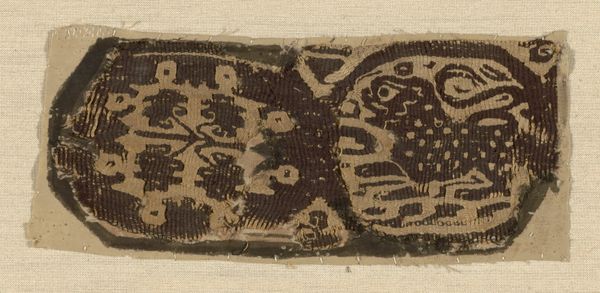
weaving, textile
#
textured paper
#
pattern
#
weaving
#
textile
#
paper texture
#
text
#
islamic-art
Dimensions: 4.8 × 12.4 cm (1 7/8 × 4 7/8 in.)
Copyright: Public Domain
Editor: This is a textile fragment, dating potentially from between 969 and 1171. It’s attributed to an anonymous artist and held here at the Art Institute of Chicago. It strikes me as surprisingly vibrant, given its age, but also fragile. What do you make of this piece, looking at it through a historical lens? Curator: This fragment offers a fascinating glimpse into the social and cultural context of Islamic textile production. Think about where it was found, likely Egypt or another area within the Fatimid Caliphate. The use of textiles extended beyond clothing, permeating social rituals, signifying status, and shaping interior spaces. Does seeing the weave make you consider the skilled labor involved? Editor: It does now! I was just appreciating the pattern. The circles and script… were these common motifs? Curator: Precisely. Calligraphic elements held significant symbolic and decorative importance in Islamic art. Consider, then, that textiles like this one moved within and beyond the Caliphate, carrying not only aesthetic beauty but also conveying cultural values and potentially exerting soft power. What does the survival of this fragment in a museum say about its perceived value now? Editor: I guess it shows that even a small piece of weaving can tell us big stories about the past and how we choose to remember it. It also reveals changing tastes over time. Thanks! Curator: Indeed. It highlights how museums shape the narrative around art, sometimes elevating fragments into treasured artifacts that reveal broader socio-political landscapes. A rewarding discussion!
Comments
No comments
Be the first to comment and join the conversation on the ultimate creative platform.
